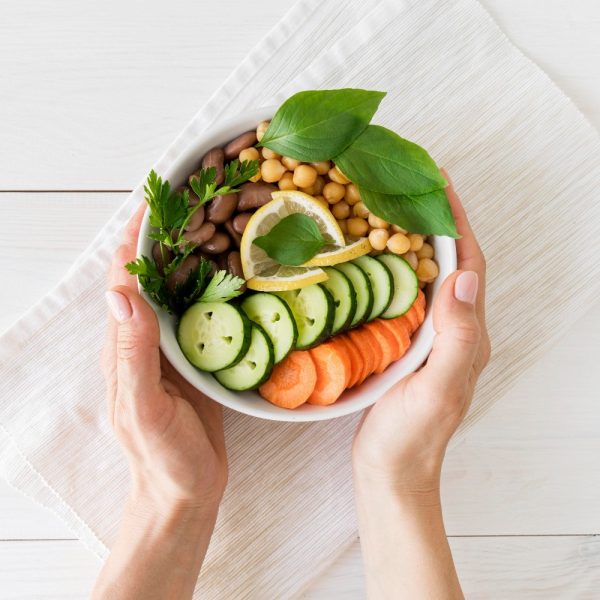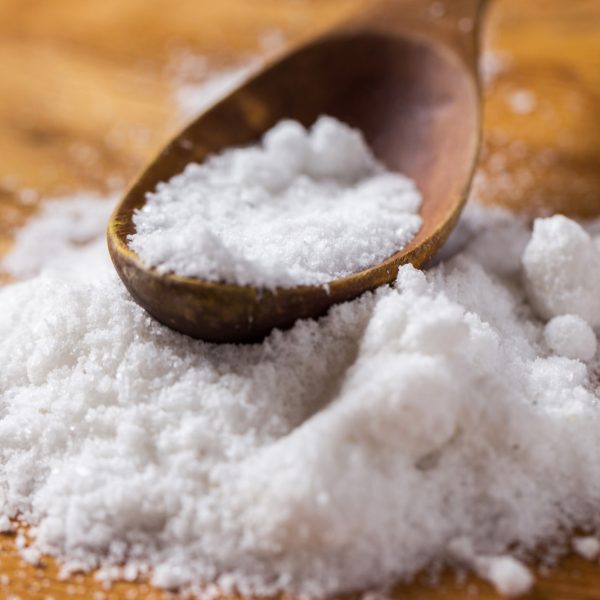Proteins
are an
essential
nutrient
required
by the
human body
for growth
and
repair. It
is
commonly
found in
animal
products
like meat,
eggs, and
dairy.
However,
with the
rise of
veganism
and
concerns
about the
environmental
impact of
animal
agriculture,
there has
been a
growing
interest
in
alternative
sources of
protein.
In this
newsletter,
we delve
into the
needs,
sources,
availability
and health
benefits
of alt
proteins.
|
|
|
What are
proteins and
how much do
we really
need?
|
As most
of you’d
recall
from
textbooks
at school
–
“proteins
are the
building
blocks of
the body”.
They’re
large
molecules
made up of
amino
acids that
do most of
the work
in the
cells, and
are
critical
for the
structure,
function
and
regulation
of the
body’s
tissues
and
organs.
The
amount of
protein
that
adults
need to
consume
depends on
several
factors
such as
age,
gender,
body
weight,
and
physical
activity
level.
However,
as per the
Recommended
Dietary
Allowance
(RDA), the
average
adult
needs to
consume
approximately
0.8 grams
of protein
per
kilogram
of body
weight per
day. For
example, a
sedentary
adult
weighing
~68
kilograms
would
require
approximately
55 grams
of protein
per day
(68 kg x
0.8 g/kg).
Individuals
who are
more
physically
active,
pregnant,
or
lactating
may
require
more.
|
|
However,
it’s
not
just
the
quantity,
but
also
the
quality
of
protein
that
makes
a
difference,
especially
when
considering
alternative
protein
sources.
|
|
|
Proteins
that
contain
all the
essential
amino
acids,
such as
those
found in
animal
products,
are
considered
high-quality
or high
value
proteins.
Plant-based
sources of
protein
may not
contain
all the
essential
amino
acids in
the
required
proportions
for the
body, so
it is
important
for
vegetarians
and vegans
to consume
a variety
of
plant-based
protein
sources to
ensure
they are
meeting
their
nutrition
needs. It
is also
important
to consult
with a
healthcare
provider
or
nutritionist
to
determine
the
appropriate
protein
intake for
an
individual
based on
their
specific
needs.
|
|
Alternative
proteins,
often
referred
to as “alt
proteins,”
are food
products
that serve
as
substitutes
for
traditional
animal-based
proteins,
such as
meat,
poultry,
seafood,
and dairy
products.
They are
developed
using
various
innovative
technologies
and
ingredients
to mimic
the taste,
texture,
and
nutritional
profile of
animal-derived
proteins.
Examples
of
alternative
proteins
include
pulses,
nuts and
seeds,
soy,
quinoa,
and even
insects.
These
sources of
protein
are
becoming
increasingly
popular in
many parts
of the
world,
including
India,
where they
offer a
way to
meet the
nutritional
needs of a
large
population
that may
not have
access to
or can’t
afford
traditional
sources of
protein.
|
|
|
What’s
creating
this global
phenomenon?
|
There are
multiple
factors
that are
contributing
to the
increased
interest
in
alternative
protein
sources.
In fact,
we’re
witnessing
an overall
increasing
trend
towards
adoption
of
vegetarianism
&
veganism,
especially
amongst
those with
higher
disposable
incomes in
urban
India.
|
|

|
-
Health
considerations: While there are
arguments to be made on
both sides, alt protein
sources are able to offer
some nutritional benefits
such as low saturated fats
& cholesterol, which
animal proteins are known
to be high on. This can
contribute to a healthier
diet and may help reduce
the risk of certain health
conditions, such as heart
disease and obesity.
-
Ethical
concerns: With an ever increasing
demand for meats and dairy
products, multiple
instances of animal
cruelty and unethical
treatment have come to the
fore over the past few
years. Alternative protein
sources provide a way to
enjoy protein-rich foods
without the need for
conventional animal
agriculture, and therefore
reduce instances for
animal suffering.
-
Environmental
concerns: Traditional animal
agriculture has a
significant environmental
impact, including
deforestation, greenhouse
gas emissions, and water
pollution. In fact, the
highest percentage of
greenhouse gas emissions
per 100 g of protein are
associated with the
production of animal meat.
Alternative proteins offer
a more sustainable
approach with reduced land
and water use, lower
emissions, and potentially
less waste; switching to
alternative protein
sources can save 8
Gigatonnes of CO2 per
year. With increased
environmental awareness
and concerns, a new
generation of alt protein
enthusiasts are driving
the conversation around
this sustainable
lifestyle.
-
Food security &
affordability: Globally, meat
consumption is the highest
it has ever been, with
global meat production
projected to double by
2050. As the global
population continues to
grow, ensuring sufficient
nutritious food supply is
a significant challenge.
Alternative proteins
present an opportunity to
diversify the food supply,
potentially reducing the
pressure on traditional
livestock farming and
increasing the
availability of
protein-rich foods.
A
combination
of the
above
factors
has led to
an
increase
in
consumer
demand,
which has
fuelled
investments
and
support
from the
business
sector as
well. The
alt
protein
industry
received
investments
of over $5
bn in 2021
alone,
leading to
increased
research,
development
and
production
of these
products.
|
|
|

|
Get
direct
access
to
the
most
up-to-date,
comprehensive,
&
accurate
information
on
nutrition,
health,
and
so
much
more!
|
|
|
|
|
Do
Alt-Proteins
make sense
for
India?
|
Short
answer,
yes! India
is one of
the most
populous
countries
in the
world and
has a
significant
portion of
its
population
living in
poverty.
India also
faces a
dual
burden of
malnutrition,
with
issues of
undernutrition
and
overnutrition
coexisting.
Protein
deficiency
contributes
to
malnourishment,
and it is
estimated
that 73%
of the
Indian
population
has a
protein-deficient
diet.
Alternative
proteins,
particularly
plant-based
proteins,
can play a
role in
addressing
both ends
of this
spectrum.
They can
provide
essential
nutrients
for
individuals
with
limited
access to
animal-based
proteins
while
offering
healthier
alternatives
to heavily
processed
and less
nutritious
foods.
According
to a
baseline
survey of
2014
released
by the
registrar
general of
India,
contrary
to popular
belief, 71
percent of
Indians
over the
age of 15
are
non-vegetarian.
However,
traditional
sources of
protein
like meat,
eggs, and
dairy are
expensive
and not
accessible
to
everyone,
making
accessibility
of
alternative
sources of
protein a
necessity.
While a
large
number of
Indians
deal with
the perils
of
poverty, a
burgeoning
middle
class with
higher
disposable
incomes
has
increased
the demand
for
protein-rich
foods.
Traditional
livestock
farming is
likely to
struggle
to meet
this
demand
sustainably,
and
alternative
proteins
may offer
a scalable
solution
to bridge
this
protein
gap.
|
|
There are
several
different
types of
alternative
proteins,
each with
their
unique
production
methods,
characteristics
and
benefits.
|
|
Plant-based
proteins:
these
proteins
are
derived
from
various
plant
sources,
such as
legumes,
grains,
seeds, and
vegetables.
They are
processed
and
formulated
to mimic
the taste,
texture,
and
nutritional
profile of
animal-based
proteins.
Sources of
plant
proteins
include
oilseeds
such as
soybeans,
peanut,
and
linseed;
pulses
such as
beans,
lentils,
and
lupines;
cereals
such as
wheat,
corn,
rice, and
oats; and
leaf
proteins
such as
alfalfa,
sugar
beet, and
clovers.
Some
common
examples
include:
|
|
-
Soy protein: Extracted from
soybeans, soy protein is
widely used in products
like tofu, tempeh, and
plant-based meat
alternatives
-
Pea protein: Made from yellow peas,
pea protein is a popular
ingredient in plant-based
burgers, protein powders,
and snacks
-
Hemp protein: Derived from the seeds
of the cannabis plant,
hemp proteins are packed
with essential amino
acids, fiber and omega 3
fatty acids. They are
consumed as raw seeds, or
as a powder added to
smoothies or baked
goods
-
Wheat protein
(gluten): Gluten, the protein
found in wheat, is used to
create meat substitutes
like seitan, often used in
dishes like stir-fries and
sandwiches
-
Quinoa:
Quinoa is a grain that is
high in protein and is
becoming increasingly
popular in India. It can
be used in a variety of
dishes, including salads,
soups, and
casseroles.
Algal
proteins:
Algae are
a diverse
group of
aquatic
organisms
that can
be
utilized
as a
protein
source.
Algal
protein
can be
extracted
and
processed
into
various
forms,
including
protein
powders
and
supplements.
It offers
a
sustainable
protein
option
with
potential
health
benefits,
as algae
are rich
in
essential
nutrients
like
omega-3
fatty
acids. The
most
common
example of
algal
proteins
is
Spirulina,
a type of
blue-green
algae that
is
cultivated
and
consumed
as a
nutrient-dense
(rich in
amino
acids,
vitamins,
minerals
&
antioxidants)
protein
source.
Spirulina
is
commonly
available
in the
form of
powdered
supplements,
capsules,
and added
to various
food
products
like
energy
bars and
health
drinks.
|
|
Fungal
proteins:
Fungi,
such as
mushrooms
and
mycoprotein,
can be
used as
alternative
protein
sources.
Mycoprotein
is derived
from a
filamentous
fungus
called
Fusarium
venenatum
and is
used in
products
like meat
substitutes
and
protein-rich
vegetarian
foods.
While
mushrooms
are not
exclusively
protein
sources,
they are
considered
a valuable
source of
fungal
protein,
and
varieties
like
shiitake,
oyster,
and button
mushrooms
are
commonly
consumed
in India.
Another
example of
fungal
proteins
is Quorn,
a
mycoprotein-based
meat
substitute,
which
offers a
meat-like
texture
and can be
used as a
substitute
in dishes
like
kebabs,
nuggets,
and
curries.
While it
is not
widely
available
in India,
it is
gaining
popularity
in some
urban
centers.
|
|
Microbial
proteins:
Microorganisms,
such as
bacteria
and yeast,
can be
harnessed
to produce
protein
through
fermentation
processes.
These
proteins
can be
used as
alternatives
in various
food
products.
A common
example of
microbial
protein is
tempeh – a
traditional
Indonesian
food made
from
fermented
soybeans.
Produced
by
culturing
soybeans
with a
specific
fungus
called
Rhizopus
oligosporus,
tempeh is
a
nutritious
protein
source and
has a firm
texture
and nutty
flavor. In
India,
tempeh has
recently
started to
gain
recognition,
and is
used in
stir-fries,
curries,
and
sandwiches.
|
|
Cultured
/
Lab-grown
meats:
Cultured
meat, also
known as
cell-based
or
lab-grown
meat, is
produced
by
cultivating
animal
cells in a
lab rather
than
raising
and
slaughtering
whole
animals.
These
cells are
then
multiplied
and
developed
into
muscle
tissue,
which can
be
processed
into meat
products.
Currently,
the field
of
cultured
or
lab-grown
meat is
still in
its early
stages of
development,
and there
are
limited
examples
of
cultured
meat
specifically
in the
Indian
context.
However,
it’s worth
noting
that the
technology
and
industry
are
rapidly
evolving
globally,
with
companies
like
BlueNalu
(US based
cultured
seafood),
Shiok
Meats
(Singapore
based
cultured
seafood)
and
Integriculture
(Japanese
cultured
meats)
making
significant
strides.
|
|
|
Complete
vs.
Incomplete
Proteins –
Understanding
the impact
of
alt-proteins
on your
health
|
We
touched
upon the
quality of
protein in
the
introduction
of this
newsletter,
but it is
important
to
understand
the
differences
between
complete
&
incomplete
proteins,
to create
a balanced
&
nutritious
diet for
yourself.
A food is
considered
to be a
complete
protein,
if it
contains
all nine
essential
amino
acids,
that the
body
cannot
synthesize
naturally.
All animal
sourced
foods are
considered
complete
proteins.
The table
below
lists all
these
amino
acids and
their core
functions
–
|
|

|
In
contrast,
a food is
considered
an
incomplete
protein if
it lacks
some of
the
essential
amino
acids, or
it does
not
contain
significant
amounts of
each amino
acid. Most
plant
based
proteins
are
considered
incomplete
proteins.
Now this
does not
mean that
plant
based
proteins
are
nutritionally
inferior.
In fact,
most plant
based
foods
contain
other
nutrients
including
fiber,
antioxidants,
vitamins
and
minerals,
which are
good for
your
health.
However,
since we
need to
ensure
that the
body gets
all
essential
amino
acids, it
is a good
idea to
consume a
variety of
different
types of
protein –
this
practice
is often
referred
to as
Protein
Rotation.
By
consuming
a variety
of
sources,
one can
ensure
they get
all the
essential
amino
acids
required
for muscle
growth and
repair.
For
example,
legumes
like
lentils,
chickpeas
&
black
beans are
high on
some amino
acids like
lysine,
tryptophan,
and
histidine,
but do not
contain
all the
essential
ones.
Similarly,
Seitan
(made from
wheat
gluten) is
a good
source of
amino
acids like
glutamine,
proline,
and
glycine,
but
doesn’t
contain
all the
essential
amino
acids.
However,
by
combining
these and
introducing
other
alternative
proteins
into a
diet, one
can ensure
that the
body gets
all the
essential
amino
acids.
In
addition
to
providing
a variety
of amino
acids,
protein
rotation
can also
help
prevent
boredom
with the
same foods
and
provide a
range of
other
nutrients
that are
found in
different
protein
sources.
|
|
Alternative
proteins
are
transforming
the food
industry
by
offering
sustainable,
ethical,
and
nutritious
options.
From
plant-based
proteins
to
cultured
meats,
these
alternatives
provide
exciting
possibilities
for a
healthier
future.
They not
only
address
environmental
concerns
but also
have the
potential
to improve
health
outcomes
by
providing
nutrient-rich
options.
However,
there are
still
challenges
of
accessibility,
affordability,
and
acceptance
of
alternative
proteins
in India,
that will
require
concerted
efforts to
solve.
Ensuring
widespread
availability
to reach
economically
disadvantaged
communities,
reducing
costs
through
scaling up
production,
and
catering
to local
tastes and
preferences
are key
obstacles.
However,
with
continued
investment,
supportive
policies,
and
collaboration
among
stakeholders,
India can
unlock the
benefits
of
alternative
proteins,
fostering
food
security,
sustainability,
and
improved
public
health.
|
|
|
|
Want to
help someone
who is
confused
about
Proteins?
Share this
article with
them.
|
|
|
|
|
|
|











Share this article